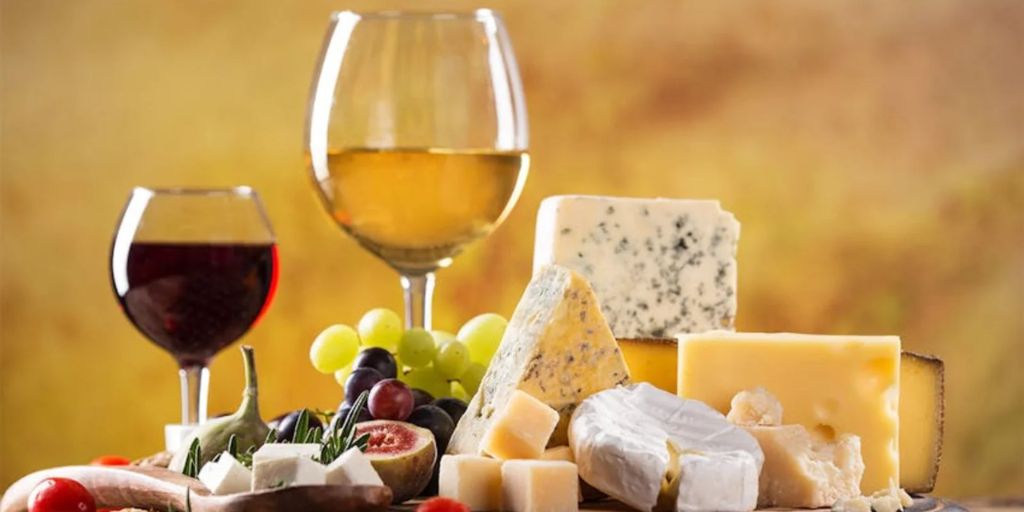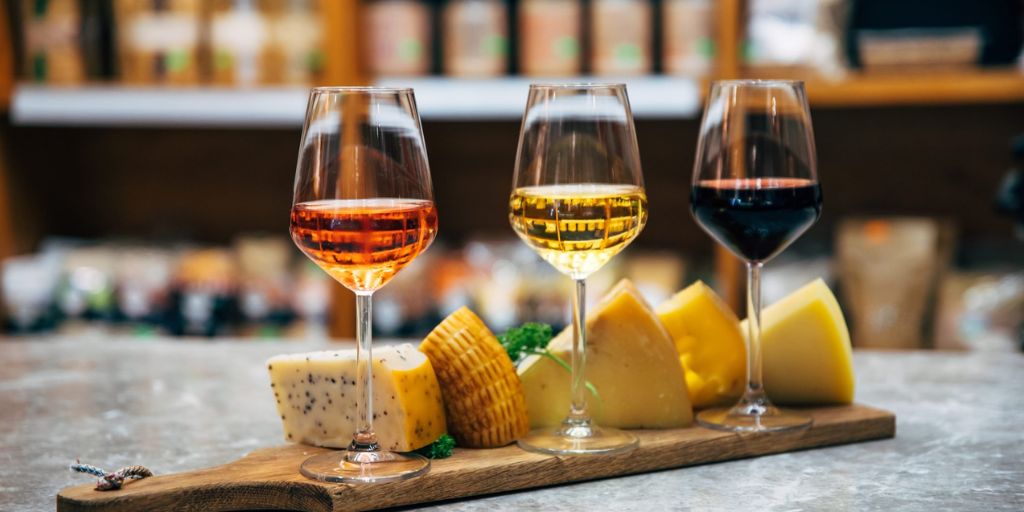Wine and cheese have been a classic pairing for centuries. Whether you’re hosting a dinner party, enjoying a casual snack, or celebrating a special occasion, knowing how to pair wine with cheese can elevate your experience to a whole new level. While it may seem like an art reserved for sommeliers, pairing wine with cheese can be surprisingly simple and enjoyable once you understand the basics. Here’s how you can pair wine and cheese like a pro, impressing guests and refining your palate.
The Basics of Wine and Cheese Pairing
Before diving into specific pairings, it’s essential to understand the fundamental principles of wine and cheese combinations. Successful pairings typically balance the textures, flavors, and intensity of both the wine and the cheese. Here are some tips to keep in mind:
1. Match the Intensity
When pairing wine and cheese, the key is to match the intensity of both. A rich, full-bodied wine can overwhelm a delicate cheese, while a mild wine may be lost alongside a pungent cheese. Consider both the flavor profile and the texture of the wine and cheese to ensure they complement rather than compete with each other.
2. Consider the Flavor Profiles
Cheeses range from creamy and mild to tangy and sharp, while wines can be fruity, tannic, dry, or sweet. The goal is to create a harmonious balance where the flavors of both elements highlight each other. For instance, a creamy cheese might pair well with a wine that has bright acidity, helping to cleanse the palate.
3. Sweetness Can Be a Secret Weapon
Sweet wines are often an unexpected but perfect match for salty cheeses. The contrast between sweet and salty can create a dynamic, balanced pairing. For example, a tangy blue cheese pairs wonderfully with a rich, sweet wine like Sauternes.
Classic Wine and Cheese Pairings
Let’s explore some of the classic combinations that wine enthusiasts have perfected over the years. These pairings are tried-and-true and will work wonders if you’re looking for a no-fail option.
1. Brie and Chardonnay
Brie is a soft, creamy cheese with a mild flavor. Its richness is best balanced with a white wine that has both acidity and body. Chardonnay, especially those with a little oak aging, has enough structure and acidity to complement Brie without overpowering it. The buttery, nutty flavors of the wine bring out the creamy richness of the Brie.
-
Why It Works: Both the wine and cheese have a similar weight, creating a smooth and balanced pairing.
2. Gouda and Cabernet Sauvignon
Gouda, a firm and flavorful cheese, has a rich and slightly sweet profile that works beautifully with the deep, tannic structure of Cabernet Sauvignon. The bold fruit flavors and tannins of Cabernet help cut through the creaminess of the cheese, while enhancing the savory notes of the Gouda.
-
Why It Works: The contrast in textures—smooth and creamy cheese versus bold, structured wine—creates a satisfying pairing.
3. Goat Cheese and Sauvignon Blanc
Goat cheese is tangy and often a bit earthy, which makes it an excellent match for Sauvignon Blanc. The wine’s bright acidity and citrusy flavors work to balance the tanginess of the cheese. The fresh, grassy notes in the Sauvignon Blanc also complement the earthy undertones of goat cheese.
-
Why It Works: The acidity in the wine refreshes the palate and cleanses it between bites of the creamy cheese.
4. Blue Cheese and Port
Blue cheese is intensely pungent, salty, and often sharp. It’s best paired with a sweet, full-bodied wine like Port to counterbalance its bold flavours. The richness and sweetness of Port help to temper the saltiness and sharpness of blue cheese, creating a contrast that enhances both elements.
-
Why It Works: The sweetness of the Port cuts through the saltiness of the blue cheese, offering a delightful contrast.
Experimenting with Less Traditional Pairings
While the classic pairings are always a safe bet, don’t be afraid to explore more unconventional options. These combinations might not be as widely known but can surprise your palate with their delicious synergy.
1. Pecorino Romano and Chianti
Pecorino Romano is a salty, firm sheep’s milk cheese that pairs beautifully with the earthy, tannic qualities of Chianti. The wine’s acidity and dryness balance the richness of the cheese, while the fruitiness of Chianti elevates the savory notes of Pecorino.
-
Why It Works: Chianti’s acidity helps cleanse the palate, while its earthy undertones complement the salty, tangy cheese.
2. Aged Manchego and Tempranillo
Aged Manchego is nutty, firm, and slightly sweet, making it a great match for Tempranillo, a red wine known for its smoky, berry-flavored profile. The firm texture of the cheese pairs well with the smooth tannins of Tempranillo, creating a complex yet balanced combination.
-
Why It Works: The nutty flavors of Manchego are enhanced by the wine’s rich fruit and oak undertones.
3. Camembert and Pinot Noir
Similar to Brie but with a stronger earthy flavor, Camembert pairs wonderfully with Pinot Noir. The wine’s light body and delicate acidity provide a beautiful contrast to the creamy cheese, while its subtle berry notes match the richness of the cheese.

-
Why It Works: The light body of Pinot Noir won’t overpower the cheese, and the wine’s earthy tones bring out the earthy flavors of the Camembert.
Some Additional Pairing Tips
1. The Cheese Should Come First
When planning your wine and cheese pairings, start by selecting the cheese. The wine should complement and elevate the cheese, not the other way around. Choose cheeses based on your preferences and then match a wine that balances or contrasts those flavors.
2. Serve Cheese at the Right Temperature
For the best flavor experience, serve cheese at room temperature (around 60°F/16°C). Cold cheese can dull its flavors, making it less enjoyable to pair with wine.
3. Pair Wine with Cheese Based on Texture
Hard cheeses like Parmesan, Gouda, and Manchego generally pair better with bold red wines, while softer cheeses like Brie, Camembert, and goat cheese do well with white wines or lighter reds.


